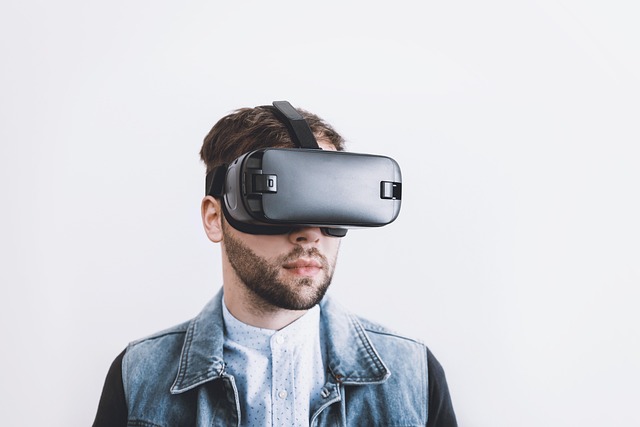Virtual Reality (VR) has transformed the way we engage with digital content, from immersive gaming and realistic training environments to virtual tourism and interactive storytelling. With the integration of Artificial Intelligence (AI), VR experiences are evolving beyond what was once imagined, creating adaptive, responsive, and personalized interactions. AI-powered VR content creation allows for real-time customization, interactive worlds, and adaptive learning environments that cater to each user’s unique experience.
How to Use AI for Virtual Reality (VR) Experiences
The combination of AI and VR has revolutionized not just gaming but a wide range of fields, including education, healthcare, and entertainment. This post explores how AI enhances VR in several key areas, each offering exciting applications that change how we interact with virtual spaces.
AI-powered VR Content Creation
One of the primary benefits of integrating AI into VR is the capability to create dynamic, engaging content that adapts to the user’s preferences and actions. AI-powered VR content creation enables designers to automate the development of various VR elements, from 3D models to real-time animations. For instance, in gaming, AI-driven characters can respond uniquely to each player’s decisions, making the game environment feel more personalized and realistic.
In VR training simulations, AI can create adaptive environments tailored to an individual’s learning curve, allowing users to progress through scenarios at their own pace. This level of customization not only enhances engagement but also improves the learning experience. By allowing users to interact with VR environments that adjust in real time, AI helps create virtual worlds that feel more lifelike and responsive.
Furthermore, AI algorithms can process large datasets to recognize and predict user preferences, making VR content highly relevant. Whether in gaming, virtual tourism, or online shopping, this combination of AI and VR offers users a seamless blend of innovation and interaction.
Personalized VR Experiences with AI
Personalization is at the heart of engaging VR experiences, and AI makes this possible on a new level. By gathering and analyzing data from users’ interactions, AI systems can personalize VR content based on individual preferences, behaviors, and emotional responses. This personalized approach creates a unique journey for every user, allowing VR applications to resonate more deeply and maintain a lasting impact.
In the healthcare industry, for example, VR combined with AI can create therapeutic environments tailored to specific mental health needs. For patients undergoing anxiety or PTSD therapy, VR environments that adjust to their emotional state offer a more effective, immersive experience. AI can detect user discomfort or stress signals, adjusting the VR environment in real time to make it more conducive to healing.
Similarly, in virtual classrooms, AI-enhanced VR can adapt the teaching environment to suit each learner’s pace and understanding. This kind of AI-driven customization supports better outcomes in educational VR by catering to the student’s unique needs, making learning more effective and engaging.
Real-time AI Adaptations in VR Environments
One of the most exciting advancements in VR comes from AI’s ability to adapt VR environments in real time based on user input and external data. Real-time adaptations allow for a dynamic experience, as AI algorithms continuously analyze user data to adjust various elements within the virtual space. This is particularly valuable in scenarios where the VR environment must adapt quickly, such as in live gaming or simulations.
For example, in VR gaming, AI can adjust gameplay difficulty based on the player’s skill level and previous interactions. This adaptive gaming experience keeps players engaged, offering just the right level of challenge without becoming frustrating. In corporate training, AI can create evolving scenarios where VR content changes in response to trainees’ decisions, helping them learn effectively in simulated real-world situations.
Real-time AI adaptation is also beneficial in virtual tourism. Imagine a VR travel experience that adapts based on the user’s preferences, creating customized tours, historical narratives, and even adding virtual tour guides. This approach leverages AI to provide immersive and responsive experiences, catering to the unique interests of each user.
Machine Learning for VR User Engagement
Machine learning (ML), a subset of AI, plays a significant role in enhancing VR by focusing on analyzing user behavior and predicting future interactions. In VR, ML algorithms gather data points on user engagement, movements, and actions, using this information to create personalized interactions. For instance, ML can predict which areas of a virtual environment attract the user’s attention the most, helping developers optimize VR spaces for better engagement.
In the retail sector, ML-powered VR experiences can show customers personalized product recommendations based on browsing patterns, leading to a more interactive shopping experience. Customers can explore a virtual store where product suggestions evolve based on their preferences, offering a highly tailored shopping journey.
In addition to retail, ML in VR enhances customer experience in real estate, where potential buyers can take virtual property tours with AI-generated guides that cater to their specific interests. These guides can provide tailored suggestions and responses based on the buyer’s reactions and interactions, creating a unique and engaging property viewing experience.
AI-driven Immersive VR Experiences in Training Simulations
Training simulations in VR have become incredibly effective with the addition of AI. AI-driven immersive VR simulations are being utilized in various fields, from medical and military training to corporate learning. The advantage of AI in these simulations is its ability to make training highly adaptive, immersive, and realistic.
For example, in medical training, VR simulations combined with AI can mimic real-life surgical scenarios where the environment adapts to each decision made by the trainee. If a trainee makes a mistake, AI can simulate realistic consequences, allowing learners to understand the impact of their choices in a safe, controlled environment.
Similarly, in military training, AI-enhanced VR simulations offer evolving scenarios, where virtual enemies adjust strategies in response to the trainee’s actions. This creates a more realistic and challenging environment, enhancing skill-building and decision-making abilities under pressure.
Through AI-driven VR training, learners gain practical experience that would be difficult or costly to achieve in a traditional setting. This combination of AI and VR is reshaping how organizations approach professional development, making training more interactive and effective.
Interactive VR Worlds with AI
AI opens up the potential for creating interactive VR worlds where users can influence their surroundings and characters within the environment. By simulating responses that feel genuine, AI helps VR worlds become immersive experiences, enabling a level of interactivity previously unimaginable. Characters within these virtual worlds can now react based on players’ verbal and physical cues, enhancing engagement and realism.
In VR gaming, for instance, players can interact with AI-powered non-playable characters (NPCs) that respond naturally, creating a more lifelike experience. These AI-driven NPCs adjust their dialogue, actions, and responses according to the player’s actions, making the story unique each time it’s played.
Additionally, in virtual conferences or social gatherings, AI can enhance interaction by making avatars respond to conversation cues, facial expressions, or hand gestures. This kind of AI-powered interactivity fosters deeper connections in virtual spaces, offering users an experience close to real-world interactions.
Conclusion
Integrating AI into VR is pushing the boundaries of what is possible in virtual experiences. From content creation and real-time adaptations to personalized engagement and immersive training simulations, AI and VR together provide a transformative experience across industries. By enhancing realism, interaction, and personalization, AI brings VR to life in ways that are redefining how we interact with digital worlds. As these technologies continue to develop, the future of AI-driven VR promises even more advancements that will enrich learning, entertainment, and professional spaces alike.






